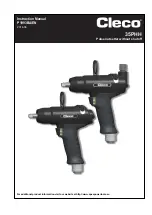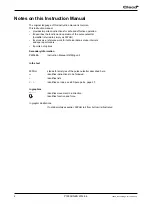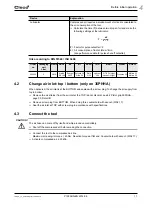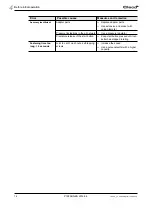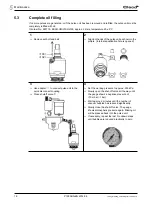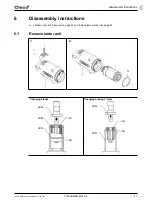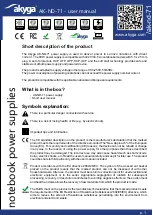
1994b_1_5_en-bedingt.fm, 12.06.2014
P1993BA/EN 2014-06
13
Before initial operation
4
4.4.2
Changing Torque
Abb. 4-2
4.4.3
Checking torque
We recommend carrying out a
static
torque check by retightening the screwed joint.
If the torque difference is too large, it may be necessary to change the torque setting. See 4.4.2 Chang-
ing Torque.
If the setting has been changed, check the torque again.
When carrying out a
dynamic
measurement using a transducer adapter, also carry out a static test on the
screwed joint, for example with a torque wrench (electronic).
4.5
Troubleshooting
Unscrew the threaded pin using the hex
wrench (WAF 2).
To reduce torque,
turn the exhaust air throttle
clockwise.
To increase torque,
turn the exhaust air throttle
counter-clockwise.
NOTE
The torque setting may be corrected when the compressed air is activated.
Error
Possible causes
Measures and remedies
Tool too strong
Torque set too high
Reduce the torque setting, see
4.4.2 Changing Torque, page 13
Tool too weak
Working pressure too low
Check the cross section of the
hose and coupling: Inner
diameter 3/8" (ø 9.5 mm), maxi-
mum length 5 m
Increase the working pressure.
Reverse button is
not at the detent
Turn the reverse button
to the detent
Excessive transmission damping due
to extension and worn socket.
Increase the speed, see 4.4.1 Set-
ting the torque, page 12.
Use a shorter or more rigid exten-
sion.
Replace the socket
Insufficient oil in the pulse unit (no
pulse build-up)
See 5.2 Fill reserve oil, page 16
Screen in the air inlet tube /
muffler is dirty
Clean or replace parts
Torque

